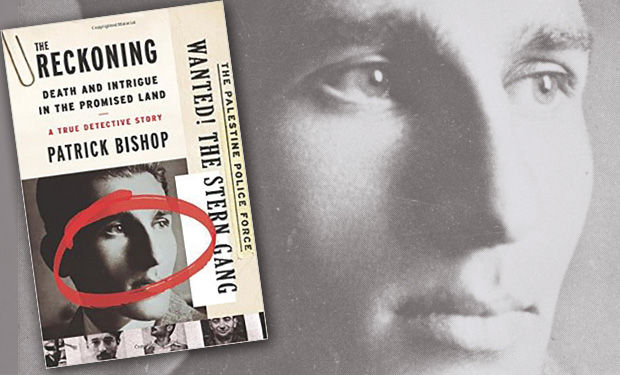True story of Zionist fighter Avraham Stern reads like a thriller
Published February 4, 2015
In “The Reckoning: Death and Intrigue in the Promised Land – A True Detective Story” (Harper, $26.99), British military historian Patrick Bishop describes the larger-than-life-size career of the militant Avraham Stern, one of the most controversial Zionist leaders in pre-Israel Palestine.
During the British Mandate, Stern was regarded as one of the leading underground fighters in Palestine and the founder of Lohamei Herut Israel (Lehi), informally called the Stern Group. He also was scorned by the British Mandate authorities, who regarded “the Stern Gang” as a terrorist organization.
Stern (1907-1942) was born in Suvalki, then Russian Poland, where he studied at the Hebrew school there. In 1925, he went to Palestine, where he continued his studies at the Hebrew University in Jerusalem. Along with his contemporaries Menachem Begin, Yitzhak Shamir and Vladimir Jabotinsky, Stern joined the Irgun Zevai Leummi (IZL) from its founding in 1931.
A handsome and dapper figure, Stern developed a reputation that was a modern equivalent of the ancient King David, able to write beautiful underground poems and songs, including “Anonymous Soldiers,” which became the IZL’s anthem. He also published a Hebrew manual on the use of firearms. Stern’s Lehi faction split from IZL in 1937.
The third pre-state paramilitary movement was the Haganah, favored by the Labor Party of David Ben-Gurion. After the state was proclaimed by Ben-Gurion in 1948, the three groups were merged into what became the Israel Defense Forces, but the political split between the militant and moderate camps continues to this day.
Stern traveled to Europe after Adolf Hitler became dictator of Nazi Germany, acquiring arms and establishing contact with Polish authorities for the organization of courses for IZL instructors in Poland. These high-risk activities by Stern and his followers are chronicled by Bishop in chilling detail. In August 1939, just one month before the Nazis invaded Poland, Stern was arrested along with other members of the IZL.
Stern provoked the strong opposition of Ben-Gurion and the Haganah by refusing to go along with the policy of suspending anti-British attacks for the duration of World War II. Ben-Gurion wanted to “fight the Nazis as if there were no British White Paper” (restricting Jewish immigration to Palestine) and to join the British with a Jewish Brigade to help defeat the Nazis.
Stern’s stance on this policy led to yet another split in his movement’s ranks and the formation of a faction called Lohamei Herut Israel, which also became known as the Stern Group or “Gang.” After the formation of the Jewish State, Stern’s group reunited with the Irgun to form the Herut Party, which eventually evolved into the present-day Likud Party.
After Stern’s release from prison in June 1940, he continued his militant activities and by 1942 was the most wanted man in Palestine, forced to take refuge in an attic in Tel Aviv. He was relentlessly hunted by British Assistant Superintendent Geoffrey Morton, who relished his assignment to track down Stern and bring him to justice. When Morton finally uncovered Stern’s hiding place, an encounter took place in which Stern was shot to death. The official British report stated that Stern was attempting to escape, and that Morton said he had reason to believe that Stern had explosives.
Author Bishop, who hones in on the official account of Stern’s death, explores fully the counter-narrative that Morton simply committed a cold-blooded murder that “precipitated a cult of martyrdom” that would inspire his followers to vehemently oppose “any possibility of a detente among the British, the Arabs and the Jews.”
Bishop engages in a relentless quest to discover the truth about Stern’s death, which he regards as ignominious. In his meticulous research, Bishop gained access to Morton’s private archive and interviews with witnesses. The issues raised by Stern’s career and Morton’s role in ending it resonate to this very day among the conflicting political parties in the State of Israel.
The cat-and-mouse game between Morton and Stern invites comparison to some of the famous detective versus adversary stories, such as Sherlock Holmes and his nemesis James Moriarty. Bishop says that while Morton and Stern appear to have nothing in common, they do share several critical traits, including “dedication to their causes and an unflinching determination to achieve their goals at all costs.” Clearly, Morton and Stern shared the belief that in their respective quests for what each considered a just cause, the end justified the means.
“The Reckoning” sheds new light on an infamous cold case in pre-Israel Palestine, and Bishop’s narrative brings freshness, insights and important new information to light. This book is a must-read for anyone interested in Zionist history and intrigue in the pre-state period.
















